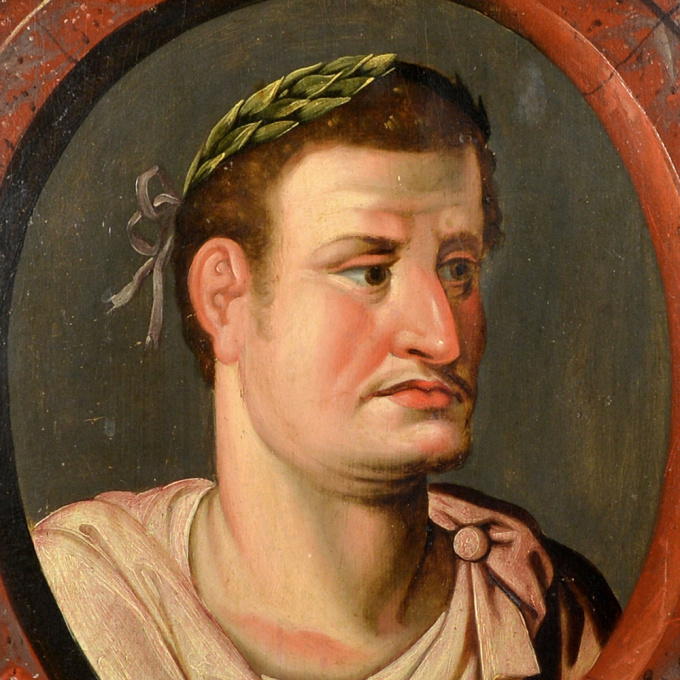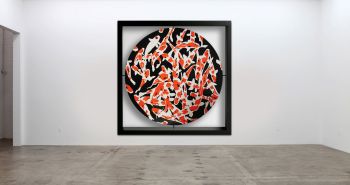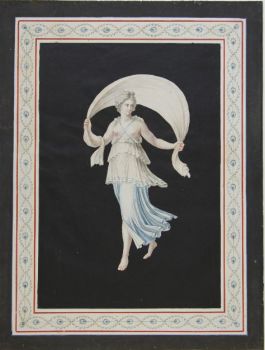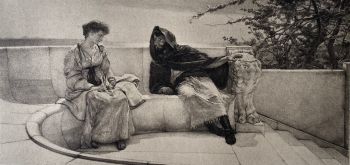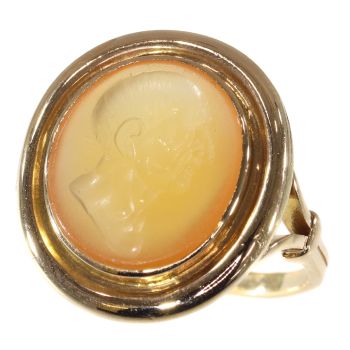Two Roman ‘Twelve Caesars’ paintings of Vespasian and Titus, 17th century 1626 - 1700
Artista Desconocido
Pintura de aceitePintura
Actualmente no disponible a través de Gallerease
Jongeling Numismatics & Ancient Art
- Sobre la obra de arteItalian school, after Peter Paul Rubens
Two portraits from the range of the ‘Twelve Caesars’. Three-quarter laureate portraits in oval. The name of the emperor below with Roman numeral.
Oil paint on wooden panel, in modern frame
Based on the series of twelve bust-length portraits of Roman emperors originally painted by Peter Paul Rubens in about 1626. He painted the first twelve emperors whose lives were documented by the Roman author Gaius Suetonius Tranquillus, a popular theme in the 17th century.
Suetonius’ work has also had a significant impact on coin collecting. Even in Rubens’ time, collecting the twelve caesars in gold and silver was a popular pursuit for collectors of Roman coins.
Dimensions: 450 x 350 mm - Sobre el artista
Puede suceder que un artista o creador sea desconocido.
Algunas obras no deben determinarse por quién está hecho o por (un grupo de) artesanos. Algunos ejemplos son estatuas de la Antigüedad, muebles, espejos o firmas que no son claras o legibles, pero también algunas obras no están firmadas en absoluto.
También puedes encontrar la siguiente descripción:
•"Atribuido a …." En su opinión, probablemente una obra del artista, al menos en parte.
•“Estudio de….” o “Taller de” En su opinión, una obra ejecutada en el estudio o taller del artista, posiblemente bajo su supervisión
•“Círculo de…” En su opinión, una obra del período del artista que muestra su influencia, estrechamente asociado con el artista pero no necesariamente su alumno.
•"Estilo de …." o “Seguidor de…”. En su opinión, una obra ejecutada al estilo del artista pero no necesariamente por un alumno; puede ser contemporáneo o casi contemporáneo
•"Manera de …." En su opinión una obra al estilo del artista pero de fecha posterior
•"Después …." En su opinión, una copia (de cualquier fecha) de una obra del artista
•“Firmado…”, “Fechado…” o “Inscrito” En su opinión, la obra ha sido firmada/fechada/inscrita por el artista. La adición de un signo de interrogación indica un elemento de duda.
•“Con firma…”, “Con fecha…”, “Con inscripción…” o “Lleva firma/fecha/inscripción” en su opinión la firma/fecha/inscripción ha sido añadida por alguien que no es el artista
¿Está interesado en comprar esta obra de arte?
Artwork details
Related artworks
Artista Sconosciuto
UN PICCOLO NETSUKE IN AVORIO DI UN OLANDESE CON UN TAMBURO1750 - 1800
Prezzo su richiestaZebregs & Röell - Fine Art - Antiques
Artista Sconosciuto
An Amazon Indigenous Kayapo feather headdress1950 - 1960
Prezzo su richiestaZebregs & Röell - Fine Art - Antiques
1 - 4 / 12Roman & Henriëtte Reisinger
Stilleven met bloemen - januari2022
Prezzo su richiestaAtelier/ Galerie H&R Reisinger
1 - 4 / 24Lawrence Alma-Tadema
"Caracalla and Geta: Bear Fight in The Coliseum, AD 203" 1907
Prezzo su richiestaGallerease Selected
 A cura di
A cura diDanny Bree
Artista Sconosciuto
Two Centaurs, France or Italylate 18th
Prezzo su richiestaRobert Schreuder Antiquair
Artista Sconosciuto
Set of eight gouache drawings1799 - 1801
Prezzo su richiestaRobert Schreuder Antiquair
Artista Sconosciuto
Braccialetto di diamanti del XVIII secolo con intagli di 2000 anni1790
€ 23.000Adin Fine Antique Jewellery
 A cura di
A cura diDanny Bree
1 - 4 / 20Johannes Evert Akkeringa
'Nettenboetsters' in the Dunes1861 - 1942
Prezzo su richiestaStudio 2000 Art Gallery
1 - 4 / 24- 1 - 4 / 12




